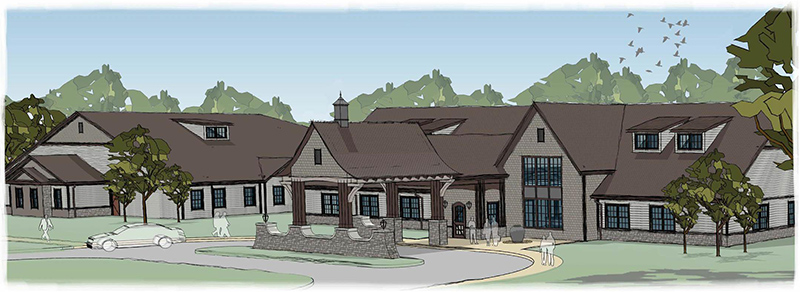Paulding County Industrial Building Authority met last week for a special-called meeting and passed a Resolution to raise the bond amount for Dallas Memory Care (DMC), a senior living facility to be located in Dallas, Georgia.  Bond Spokesperson Jim Woodward addressed the IBA board members regarding the request to hike original bond amounts from $8.5 million up to $11.5 million. Woodward told board members last week that the increase was a result of higher finished design costs.
Bond Spokesperson Jim Woodward addressed the IBA board members regarding the request to hike original bond amounts from $8.5 million up to $11.5 million. Woodward told board members last week that the increase was a result of higher finished design costs.
Last October Woodward told the Board of Commissioners that the IBA pass-through bonds connected to the financing for the project place no financial obligation, guarantee, or backing of the bond payments on either the IBA, or the county. But a vote to approve the adjusted bonds at the higher amount will require a separate action later this month from the Board, Woodward said. According to DMC Developer Skip Deupree, who responded to an email, the move was prompted when the building was increased 4,000 square feet from the original concept. “Price inflation over that time frame, gone from estimate to hard bonded bid, drove the total price up,” he said.
Dallas Memory Care (DMC) will be dedicated to the care of Alzheimer and dementia patients and represents the first successful medical project recruited by the Paulding’s Economic Development organization and tied to the Paulding WellStar hospital.
The Project will be located at 3366 Atlanta Highway, on four acres less than a mile from the hospital, in Dallas. Architect for the project is CDH Partners, the firm who designed Paulding WellStar Hospital. According to Dupree the project is due to begin by the end of the month and complete in 12 months and would bring about 40 new jobs to the county, split between medical practitioners and the service industries. IBA Director Blake Swafford commented last year that he was pleased to see something going in at the site on Atlanta Highway, in an area that hasn’t seen much in the way of growth or improvement in a while. Paulding County has been identified by Integra Realty Resources as one of the three most under-served counties in Georgia for memory care need versus available residential units. As new construction, the 48-bed facility, specifically designed for memory care, will total approximately 43,600 square feet and have an “old world” architectural style. Each of the 48 units will be approximately 375 square feet, and will include safety pull alerts, a flat-screen TV, a kitchenette and a private handicap bath. 
Deupree has undertaken two similar projects in Birmingham, Alabama. He noted that Georgia is lacking in memory care facilities and that Paulding is behind two other counties in the need for such care. But he added that Georgia is ‘friendly’ to development through its tax incentives and because it does not require a Certificate of Need license as some states, including Alabama, do. Unlike other states, Georgia places no restrictions on the number of assisted living and/or memory care beds in a market area.
Numbers of memory care patients continue to rise, both locally and nationwide. According to information on the Georgia Alzheimer’s Association website, currently about 11 percent of seniors are living with Alzheimer’s, which is expected to reach 15 percent by 2020 and spike to almost half, or 46 percent, by the year 2025. Nationwide the number of Americans with Alzheimer's disease and other dementias will escalate rapidly in coming years as the baby boom generation ages. By 2050, the number of people age 65 and older with Alzheimer's disease may nearly triple, from 5 million to as many as 16 million, barring the development of medical breakthroughs to prevent, slow, or stop the disease.
Alzheimer's is officially the sixth leading cause of death in the United States and the fifth leading cause of death for those aged 65 and older. It kills more than prostate cancer and breast cancer combined.





















